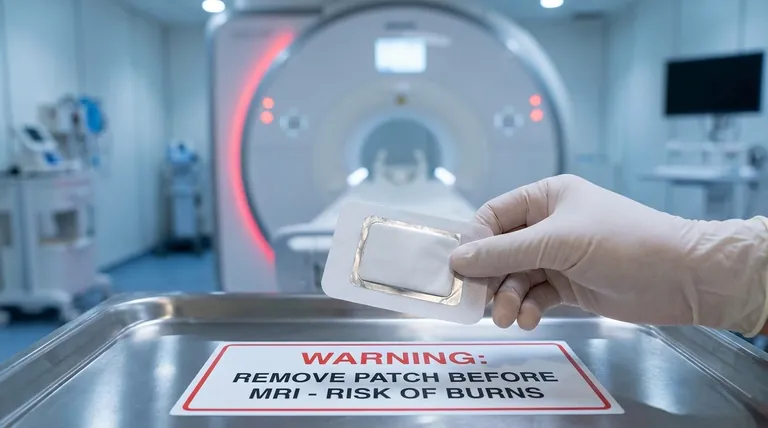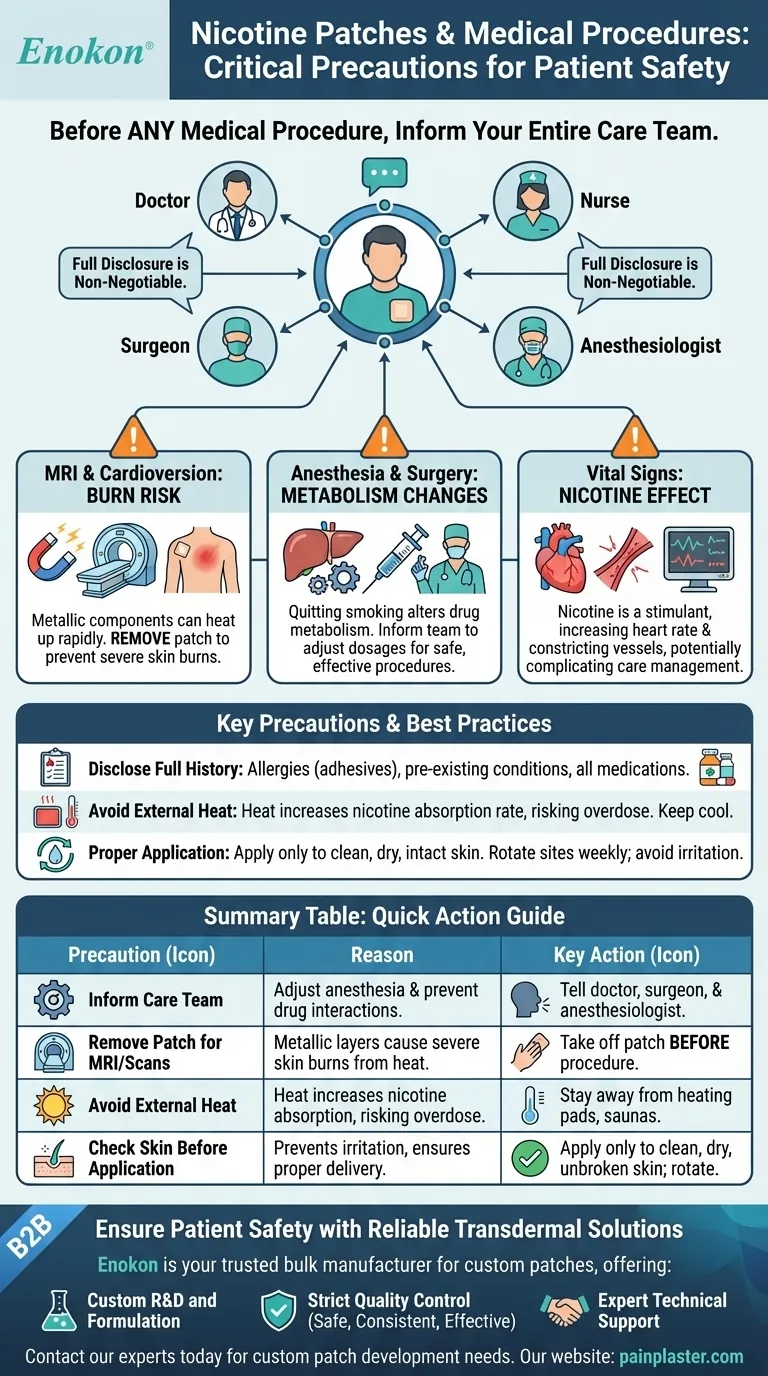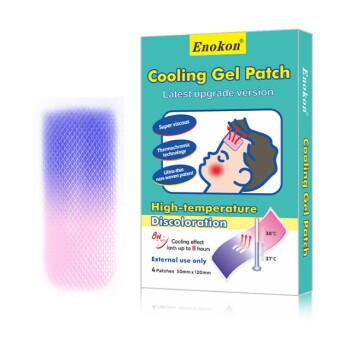Before any medical procedure, you must inform your entire care team—including doctors, nurses, and technicians—that you are using a nicotine patch. It is highly likely you will need to remove the patch before undergoing surgery, an MRI, a CT scan, or other medical interventions to avoid serious complications.
The most critical risks of wearing a nicotine patch during a medical procedure are severe skin burns from metallic components during an MRI and unpredictable reactions to anesthesia due to changes in your metabolism. Clear and early communication with your healthcare provider is your most important safety measure.

Why Full Disclosure is Non-Negotiable
Simply telling your medical team you use a nicotine patch is not enough; understanding why this information is critical empowers you to have a more informed conversation about your health and safety.
The Risk of Burns During Imaging and Procedures
Some nicotine patches contain a thin layer of aluminum or other metals.
During a Magnetic Resonance Imaging (MRI) scan, the powerful magnets can cause these metallic components to heat up rapidly, leading to serious skin burns at the patch site.
This same risk of burns exists during procedures like cardioversion, which uses electrical shocks to restore a normal heart rhythm. For this reason, the patch must always be removed beforehand.
The Impact on Anesthesia and Medications
The act of quitting smoking fundamentally changes how your liver processes certain drugs.
Anesthetics and other medications administered during surgery are carefully calibrated to your body's metabolism. Because your body is adjusting to the absence of smoke, your response to these drugs can be altered.
Informing your anesthesiologist is crucial so they can adjust dosages appropriately for a safe and effective procedure.
Nicotine's Direct Effect on the Body
Nicotine is a stimulant that can increase heart rate and constrict blood vessels.
During any medical procedure, your vital signs are monitored closely. The presence of nicotine can influence these readings and potentially complicate the management of your care, especially during surgery.
Understanding the Key Precautions
Beyond the major risks, several other factors require attention to ensure your safety both in and out of a medical setting.
Disclose Your Full Medical History
Your nicotine patch is just one piece of your health profile.
Be sure to inform your doctor of any allergies (especially to adhesives, menthol, or salicylates), pre-existing conditions like heart disease, diabetes, or asthma, and any other medications you take, including over-the-counter drugs and herbal supplements.
Avoid All External Heat Sources
Heat significantly increases the rate of nicotine absorption from the patch into your bloodstream, which can lead to an overdose.
Avoid applying heat from sources like heating pads, electric blankets, saunas, or even direct, prolonged sunlight to the patch area. This is especially relevant in a hospital setting where warming blankets may be used.
Proper Patch Application and Skin Care
Never apply a patch to skin that is red, irritated, or cut. Do not use lotions or other skin products on the area before application.
To prevent skin irritation, it's important to rotate the application site and not use the same spot for at least a week. If a patch is damaged in any way, do not use it.
A Simple Checklist Before Your Procedure
Use these clear guidelines to prepare for any upcoming medical appointment.
- If your primary focus is an MRI or Cardioversion: You must remove the patch before the procedure to prevent severe skin burns.
- If your primary focus is surgery: You must tell your surgeon and anesthesiologist about the patch and your smoking cessation status to ensure medications are dosed correctly.
- If your primary focus is any other medical test: Always disclose your patch use and be prepared to remove it based on the specific instructions from your care team.
- In all situations: Provide your care team with a complete list of your health conditions and all medications you are taking to guarantee your safety.
Proactive communication about your nicotine patch use is the single most important step you can take to ensure your medical procedure is both safe and successful.
Summary Table:
| Precaution | Reason | Key Action |
|---|---|---|
| Inform Care Team | To adjust anesthesia and prevent drug interactions. | Tell your doctor, surgeon, and anesthesiologist. |
| Remove Patch for MRI/Scans | Metallic layers can cause severe skin burns from heat. | Take off the patch before the procedure. |
| Avoid External Heat | Heat increases nicotine absorption, risking overdose. | Stay away from heating pads, saunas, and direct sunlight. |
| Check Skin Before Application | Prevents irritation and ensures proper nicotine delivery. | Apply only to clean, dry, unbroken skin and rotate sites. |
Ensure Patient Safety with Reliable Transdermal Solutions
If you are a healthcare distributor or pharmaceutical brand, partnering with a trusted manufacturer is critical for patient safety and product efficacy.
Enokon is a bulk manufacturer of reliable transdermal patches and pain plasters, offering:
- Custom R&D and Formulation to meet specific medical requirements.
- Strict Quality Control ensuring every patch is safe, consistent, and effective.
- Expert Technical Support for developing patches that align with clinical guidelines and patient needs.
Let us help you deliver high-quality transdermal solutions that healthcare providers and patients can trust.
Contact our experts today to discuss your custom patch development needs.
Visual Guide

Related Products
- Menthol Gel Pain Relief Patch
- Asthma Cough and Pain Relief Patch for Adults and Kids
- Far Infrared Deep Heat Relief Patches Medicated Pain Relief Patches
- Icy Hot Menthol Medicine Pain Relief Patch
- Capsaicin Chili Medicated Pain Relief Patches
People Also Ask
- How should a menthol patch be applied? Follow These Steps for Safe & Effective Pain Relief
- What are the important warnings for using menthol topical? Safety Tips for Effective Pain Relief
- What are common side effects of menthol patch? Key Risks & Safety Tips
- Is menthol topical safe during pregnancy and breastfeeding? Key Safety Insights
- How does menthol work in the Reliever Patch? Dual-Action Pain Relief Explained












